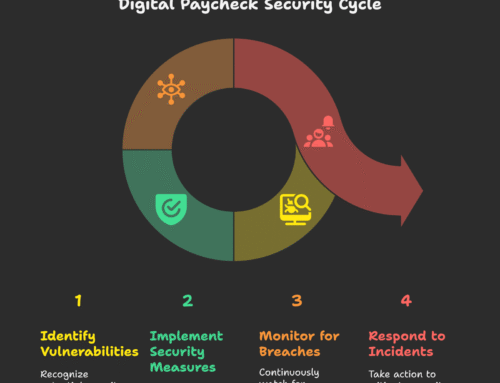Every year, U.S. companies pay billions in payroll tax penalties, primarily because of calculation or filing errors, according to the IRS. In the findings of a 2022 Ernst & Young survey, payroll teams in an average 1,000-employee organization spend nearly 29 work weeks, which is equivalent to about 1,160 hours, annually fixing the most common payroll errors related to compliance and reporting activities. This is not only a source of frustration for HR departments trying to juggle compliance, compensation, and workforce planning; it also highlights that many payroll systems are so out of date that they can no longer keep up with workload demands.
Payroll is no longer merely an administrative service; it plays a vital role in employee satisfaction, organizational compliance, and organizational decision-making. As expectations of HR begin to rise, modern-day payroll solutions are providing opportunities for payroll teams to minimize cost-related administrative burdens and allow them to start acting as a strategic business partner instead of an administrative support role. We will explore in this blog how the right payroll software can bring more than just efficiency to processes by unleashing the value of HR as a strategic asset.
Image on Freepik
From Administrative Burden to Strategic Influence
Here is how modern payroll software can make a difference by eliminating outdated inefficiencies.
Traditional Challenges in Payroll Management
Here are the challenges that were involved in traditional payroll:
- Manual error: A simple miscalculation could lead to incorrect employee payments and inaccurate reporting.
- Regulatory complexity: HR had to track complex and ever-changing federal and state tax laws.
- Tax delays: Payroll cycles sometimes took days or weeks, even longer if the teams were growing.
- Paper-based processes: Not only was it not easy to get timely data, but employees would often become frustrated by a lack of transparency in payroll processes.
These challenges not only impacted productivity but also introduced traditional risks for companies, both legally and reputationally.
How Payroll Software Streamlines Administrative Tasks
Here’s how modern payroll software changes the payroll process:
- Automated Payroll Cycle: It only takes minutes, not days, for payroll programs to calculate tax withholdings and process direct deposits.
- Simplifying Time Tracking: Integrated tracking tools can automatically sync all hours worked, PTO taken, and overtime hours so that payroll does not have to be tracked manually.
- Reducing Human Error: Payroll programs reasonably reduce human error by having preset rules for payments and deductions.
- Access: Employees have access through a self-service portal to pay stubs and other aspects of their pay cycle, plus they can change their information or approve time cards.
All in all, payroll programs take human resource management away from repetitive manual tasks and create significant bandwidth for strategic initiatives.
Key Strategic Advantages of Payroll Software
Payroll software enables HR teams to communicate and scale using centralized and unified platforms.
Data-Driven Decision-Making
Payroll systems collect valuable data that includes compensation, hours worked, seasonal patterns of the workforce, turnover rates, and more, helping businesses make decisions concerning organizational standards. For example, Paycom and other platforms integrate with powerful business intelligence tools to enable customized reports, supporting executive business planning decisions and forecasting.
Compliance and Risk Management
Every employee in every organization would benefit greatly from a smooth payroll experience. Here’s how:
- Transparency: Self-service tools may allow employees to see hours worked, earnings, and details for bonuses or commissions, deductions, and tax withholdings at their convenience.
- Timeliness: Automation should allow payroll to process on schedule without the threat of payroll being processed incorrectly or payment getting held up.
Payroll Software as a Catalyst for Integrated HR Functions
Modern payroll software is not just a payroll system; it’s also a comprehensive system where HR functions can communicate and grow together.
Aligning Payroll with Talent Management
Good payroll systems connect directly with performance management or recruiting systems. This provides several benefits:
- Performance-based pay: Real-time data links bonuses or salary adjustments with performance scores.
- Pay equity analysis: Payroll software allows you to evaluate pay equity gaps, which offers insights into your workplace’s equality and diversity.
This full integration allows payroll to become a key input in HR analytics and DEI goals.
Supporting Scalability and Workforce Expansion
Payroll complexity increases significantly as companies scale. Many pieces of software can help you ease this transition:
- Multi-country Support: Ideal for global teams, many platforms handle multiple tax systems and currencies.
- Flexible user management: As teams evolve, you want to be able to add or deactivate users easily and in real-time.
- Merger-friendly integration: All payroll data can be migrated and transitioned into one system if you are acquiring or expanding.
For a high-growth organization, this type of flexibility is not optional; it’s a must.
Choosing the Right Payroll Software
The payroll software industry is highly saturated. You’ll need to ensure your organization aligns with the features and capabilities of the software offered.
Features to Look For
These are key features that you should try to include:
- Customizable workflows: Your payroll policies should fit your business, not the other way around.
- Tax and compliance support: This is especially critical for businesses with operations in multiple states or countries.
- Real-time analytics: Ensure the software offers dashboards and exportable reports for deeper insights.
- Mobile app access: Today’s employees expect functionality on the go.
- Customer care: If you can communicate with the system’s support team, you can save yourself from disaster when doing year-end closing or during audit season.
Questions to Ask Before Investing
Before you make a commitment, you will want to know:
- Is the software compliant with data privacy standards like GDPR or CCPA?
- What is the average downtime or experience of system outages?
- Are there additional fees for updates, integrations, or user scaling?
- How easy is onboarding for HR teams with limited tech experience?
- What are other users saying in verified reviews or case studies?
These questions will not only protect your ROI but also save you from an expensive future migration.
Final Thoughts
Payroll software has moved away from being a transactional utility to being a strategic enabler. Payroll can allow HR teams to focus their time and strategic effort on smarter decision-making and heightened employee engagement, while maintaining compliance. For high-growth, competitive, or efficient organizations, investing in the right payroll platform is valuable. As organizations move toward data-driven operations, payroll will be integrated with broader HR functions to help define workplaces in the future.







Leave A Comment